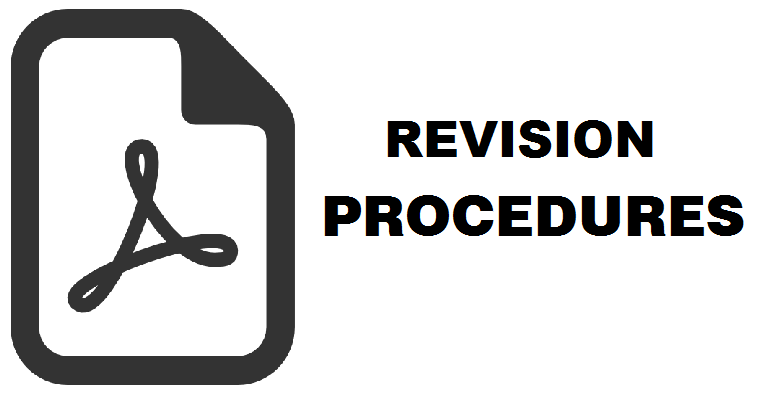Migrants’ Settlement in Malaysia: Nurturing Sustainable Urban Development through Housing Rights
Nor Suzylah Sohaimi(1*), Mohd Ramlan Mohd Arshad(2), Mohd Na’em Ajis(3), Mohd Alif Jasni(4)
(1) Institute of Local Government Studies, Department of Planning & Property Development, School of Government, Universiti Utara Malaysia, Sintok, Kedah, Malaysia
(2) Faculty of Administrative Science and Policy Studies, Universiti Teknologi MARA, Malaysia, Seremban, Negeri Sembilan, Malaysia
(3) Department of Public Management, School of Government, Universiti Utara Malaysia, Sintok, Kedah, Malaysia
(4) School of Applied Psychology, Social Work and Policy, Universiti Utara Malaysia, Sintok, Kedah, Malaysia.
(*) Corresponding Author
Abstract
Aspects of adequate housing encompass affordability, habitability, accessibility, location, cultural appropriateness, and accessibility of resources such as services, materials, utilities, and infrastructure. Migrant settlement and housing issues in Malaysia have been a persistent problem for many years. Numerous migrants are compelled to live in cramped and unsafe circumstances due to various factors, including a lack of living space, inadequate government policies, and social stigma. Surprisingly, the housing aspect of integrating regular migrants has received little focus than other integration efforts. Both locals and migrants are impacted by this apathy and vulnerability. Key guiding principles that support the right to a reasonable standard of living, which includes sufficient housing, are found in the 17 Sustainable Development Goals (SDGs), particularly SDG 11: Sustainable Cities and Communities. Therefore, this article aims to explore the issues and challenges of migrants’ settlement in Malaysia’s urban area and propose suggestions to reduce the settlement issue among migrants. Correspondingly, this study employed a qualitative methodology that combined a thorough literature review with semi-structured interviews and subsequent thematic analysis. The findings show that uncomfortable living conditions for locals and overcrowding are major issues in migrant settlements. Five strategies are suggested to address these issues: creating housing cooperatives and modular dwellings; transforming emergency housing into long-term solutions; and reusing accessible derelict buildings.
Received:2024-02-13 Revised:2024-02-23 Accepted: 2025-04-14 Published: 2025-04-27
Keywords
References
Ager, A., Strang, A., O'May, F., & Garner, P. (2001). Indicators of integration: a conceptual analysis of refugee integration (version 5.7): A report to the Home Office on behalf of Michael Bell Associates. https://eresearch.qmu.ac.uk/handle/20.500.12289/1208
Ager, A., & Strang, A. (2008). Understanding integration: A conceptual framework. Journal of refugee studies, 21(2), 166-191. https://www.researchgate.net/publication/31174952_Understanding_Integration_A_Conceptual_Framework
Ales, E. (2018, September). ILO Convention 161 Occupational Health Services Convention, 1985 (No. 161). In International and European Labour Law (pp. 1413-1428). Nomos Verlagsgesellschaft mbH & Co. KG. https://www.researchgate.net/publication/327722580_ILO_Convention_161_Occupational_Health_Services_Convention_1985_No_161_Article-by-Article_Commentary
Amao, F. L. (2012). Housing quality in informal settlements and urban upgrading in Ibadan, Nigeria (A case study of Apete in Ibadan). Developing Country Studies, 2(10), 68-80. https://core.ac.uk/download/pdf/234680893.pdf
Berita Harian, (2023). https://www.bharian.com.my/berita/kes/2023/02/1058734/penempatan-haram-pati-ada-kemudahan-sekolah-diserbu
Brown, P., Gill, S., & Halsall, J. P. (2024). The impact of housing on refugees: An evidence synthesis. Housing Studies, 39(1), 227-271. https://www.tandfonline.com/doi/pdf/10.1080/02673037.2022.2045007
Bolt, G., Phillips, D., & Van Kempen, R. (2010). Housing policy, (De)segregation and social mixing: An international perspective. Housing Studies, 25(2), 129–135. https://doi.org/10.1080/02673030903564838
Department of Statistics Malaysia (2024). Population Table. https://open.dosm.gov.my/data-catalogue/population_district
Evans, G. W. (2003). The built environment and mental health. Journal of Urban Health, 80, 536-555. 10.1093/jurban/jtg063
Goux, D., & Maurin, E. (2005). The effect of overcrowded housing on children's performance at school. Journal of Public economics, 89(5-6), 797-819. https://doi.org/10.1016/j.jpubeco.2004.06.005
Human Rights Commission of Malaysia (SUHAKAM). (2020). Dialogue with Vulnerable Communities: An Assessment of Needs and Next Steps Amid COVID19 Pandemic. https://suhakam.org.my/2020/08/dialogue-with-vulnerable-communities-an-assessment-of-needs-and-next-steps-amid-covid-19-pandemic/
Institute for Human Rights and Business (IHRB). (2019). “Migrant Worker Accom - modation.” https://www.ihrb.org/uploads/briefings/IHRB_Briefing_-_Migrant_Worker_Accommodation_-_Feb_2019.pdf
Islam, M., Sultana, Z. Z., Iqbal, A., Ali, M., & Hossain, A. (2021). Effect of in-house crowding on childhood hospital admissions for acute respiratory infection: A matched case–control study in Bangladesh. International Journal of Infectious Diseases, 105, 639-645. https://doi.org/10.1016/j.ijid.2021.03.002
Jasni, M. A., Hassan, N., Ibrahim, F., & Kamaluddin, M. R. (2023). The experience of internal (Domestic) migration among 30 Homeless Former Prisoners in Kuala Lumpur, Malaysia. Indonesian Journal of Geography, 55(2), 361-369.
Jones, P. (2017). Formalizing the informal: Understanding the position of informal settlements and slums in sustainable urbanization policies and strategies in Bandung, Indonesia. Sustainability, 9(8), 1436. https://doi.org/10.3390/su9081436
Mia, M.A., & Zull, E.I. (2020). Housing affordability: Measurements and trends. In: Leal Filho, W., Marisa Azul, A., Brandli, L., Gökçin Özuyar, P., Wall, T. (eds) Sustainable Cities and Communities. Encyclopedia of the UN Sustainable Development Goals. Springer, Cham. https://doi.org/10.1007/978-3-319-95717-3_89
Ministry of Housing and Local Government .(2021). Centralised Labour Quarters Guideline. https://jkt.kpkt.gov.my/wp-content/d/sites/default/files/2021-08/04-GPP-Perancangan-Penginapan-Pekerja-Berpusat-CLQ.pdf
Nasir, N. H., Haque, M. M., & Awang, M. B. (2023). The challenges in providing adequate housing for migrant workers in Terengganu, Malaysia. Malaysian Journal of Social Sciences and Humanities (MJSSH), 8(4), e002265-e002265.
Niva, V., Taka, M., & Varis, O. (2019). Rural-urban migration and the growth of informal settlements: A socio-ecological system conceptualization with insights through a “water lens”. Sustainability, 11(12), 3487. https://doi.org/10.3390/su11123487
Office of the United Nations High Commissioner for Human Rights (OHCHR). (2009). “The Right to Adequate Housing”, Fact Sheet No. 21/Rev.1. https://www.ohchr.org/sites/default/files/Documents/Publications/FS21_rev_1_Housing_en.pdf
Open Society Foundations. 2020. “Protecting the Right to Housing during the COVID-19 Crisis”, Open Society Foundation Briefing Paper. https://www.justiceinitiative.org/uploads/d6e9e6ff-1b16-4d0f-bbde-65cf04e3f15f/ji-covid_housing_report-2020_12_07.pdf
Parks, M. J. (2014). Urban poverty traps: Neighbourhoods and violent victimisation and offending in Nairobi, Kenya. Urban Studies, 51(9), 1812-1832. https://doi.org/10.1177/00420980135041
Pitoyo, A. J., Ihwanudin, I., Alfana, M. A. F., & Aryati, S. (2022). Migration Trajectories among Rural Households in Indonesia. Indonesian Journal of Geography, 54(2), 290-302. https://doi.org/10.22146/ijg.57819
Rica, C. (2015). Consideration of reports submitted by States parties under articles 16 and 17 of the International Covenant on Economic, Social and Cultural Rights: 5th periodic reports of States parties due in 2012: Costa Rica. https://www.refworld.org/reference/statepartiesrep/cescr/2015/en/115206
Royuela, V., Díaz-Sánchez, J. P., & Romaní, J. (2019). Migration effects on living standards of the left behind. The case of overcrowding levels in Ecuadorian households. Habitat International, 93, 102030. https://doi.org/10.1016/j.habitatint.2019.102030
Segrave, M., & Burnett-Wake, C. (2017). Addressing family violence through visa sponsor checks: a step in the right direction?. Current Issues in Criminal Justice, 29(2), 155-165. https://papers.ssrn.com/sol3/papers.cfm?abstract_id=3131649
Setiadi, S. (2020). Migration, landscape dynamics, and fishermen livelihood: A case study at East Kalimantan. Indonesian Journal of Geography, 52(3), 290-302. https://doi.org/10.22146/ijg.54700
Shannon, H., Allen, C., Clarke, M., Dávila, D., Fletcher-Wood, L., Gupta, S., ... & Allen Kahangire, D. (2018). Web Annex A: Report of the systematic review on the effect of household crowding on health. WHO housing and health guidelines. https://www.ncbi.nlm.nih.gov/books/NBK535299/
Sheill, K. (2022). Home truths: access to adequate housing for migrant workers in the ASEAN region. https://labordoc.ilo.org/permalink/41ILO_INST/kc2336/alma995174693102676
Sohaimi, N. S., Abdullah, A., & Shuid, S. (2018). Determining housing affordability for young professionals in Klang Valley, Malaysia: Residual income approach. Planning Malaysia, 16. https://doi.org/10.21837/pm.v16i6.464
Sohaimi, N. S. (2022). How Much Does An Affordable House Cost To Be Paid By Young Professionals In Greater Kl, Malaysia?. Planning Malaysia, 20. https://doi.org/10.21837/pm.v20i21.1093
Soyinka, O., & Siu, K. W. M. (2018). Urban informality, housing insecurity, and social exclusion; concept and case study assessment for sustainable urban development. City, culture and society, 15, 23-36. https://doi.org/10.1016/j.ccs.2018.03.005
Sphere Association. 2018. The Sphere Handbook: Humanitarian Charter and Minimum Standards in Humanitarian Response, 4th edition.
Stats NZ (2018). Living in a crowded house: Exploring the ethnicity and well-being of people in crowded households. Retrieved from www.stats.govt.nz.
Stone, M. E., Burke, T., & Ralston, L. (2011). The residual income approach to housing affordability: The theory and practice. AHURI Positioning Paper No. 139, Australian Housing and Urban Research Institute Limited, Melbourne, https://www.ahuri.edu.au/research/position-papers/139.
Tao, L. W. (2017). The drawbacks of housing overcrowding characteristic to rural migrants’ life in Beijing. HBRC journal, 13(3), 315-320. https://doi.org/10.1016/j.hbrcj.2015.11.002
Utusan (2023). https://www.utusan.com.my/berita/2023/03/penempatan-haram-pati-di-bandar-ainsdale-diserbu/
United Nations. (2011). Universal Declaration of Human Rights. 1948. The United Nations, 6. https://www.un.org/en/about-us/universal-declaration-of-human-rights
United Nations Committee on Economic, Social and Cultural Rights (UN CESCR). (1991). General Comment No. 4: The Right to Adequate Housing (Art. 11 (1) of the Covenant), E/1992/23. https://www.ohchr.org/sites/default/files/Documents/Publications/FS21_rev_1_Housing_en.pdf
UN-Habitat, (2003). The Challenge of Slums - Global Report on Human Settlements 2003. https://reliefweb.int/report/world/challenge-slums-global-report-human-settlements-2003?gad_source=1&gclid=Cj0KCQiAw6yuBhDrARIsACf94RXbWHS8H_mnPxcl3N9S3BGh-Ri8BSpzZBKVDZan0pWRnSKZtoB8DkUaAsm2EALw_wcB
UN-Habitat. (2016). Urbanization and development: emerging futures. World cities report, 3(4), 4-51. https://unhabitat.org/world-cities-report-2016
United Nations Human Rights Council (UN Human Rights Council). (2012). Report of the Special Rapporteur on adequate housing as a component of the right to an adequate standard of living, and on the right to non-discrimination in this context, A/HRC/22/46. https://digitallibrary.un.org/record/861179
Wahab, A. A. (2020). Migrant Workers and Covid-19 Outbreak in Malaysia. Institute of Malaysian and International Studies, Universiti Kebangsaan Malaysia. https://doi.org/10.1016/j.ssaho.2020.100073
World Health Organization (WHO). (2018). Housing and health guidelines. https://www.ncbi.nlm.nih.gov/books/NBK535293/
Yulfa, A., Syafrina, Y., Saumia, Z., & Naldi, H. (2023). The Changes and Spread of Settlements in Chinese Padang, Indonesia. The Indonesian Journal of Geography, 55(2), 264-274. https://doi.org/10.22146/ijg.73459
Article Metrics
Refbacks
- There are currently no refbacks.
Copyright (c) 2024 Authors and Indonesian Journal of Geography

This work is licensed under a Creative Commons Attribution-NonCommercial 4.0 International License.
Accredited Journal, Based on Decree of the Minister of Research, Technology and Higher Education, Republic of Indonesia Number 225/E/KPT/2022, Vol 54 No 1 the Year 2022 - Vol 58 No 2 the Year 2026 (accreditation certificate download)
ISSN 2354-9114 (online), ISSN 0024-9521 (print)










